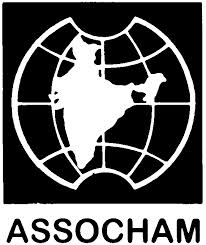 WB has highest share in area under brackish water culture across India
WB has highest share in area under brackish water culture across India
Though West Bengal (WB) had largest available brackish water area of over four lakh hectares (ha), the state had brought a meagre 12 per cent area of about 47,488 ha under brackish water culture as of 2009-10, noted a study by apex industry body ASSOCHAM.
“Likewise, out of the total potential area of over 11 lakh hectares (ha) available for brackish water culture across India, a meagre 8.5 per cent of the same i.e. about 1 lakh ha had been used for shrimp farming in the country,” highlighted the study titled ‘Promoting brackish water culture to increase shrimp production in India,’ conducted by The Associated Chambers of Commerce and Industry of India (ASSOCHAM).
“West Bengal had the highest share of over 46 per cent in total area under brackish water culture in India thereby reflecting upon the huge potential to boost shrimp production within the state, however, area under brackish water culture in West Bengal had decreased by about six per cent in four years i.e. from over 50,400 ha in 2005-06 to about 47,400 as of 2009-10,” noted the ASSOCHAM study.
Over 33,600 million tonnes (MT) shrimps were being produced in area under brackish water culture across WB as of 2009-10.
Gujarat had ranked second in terms of area available for brackish water culture but in terms of area under cultivation it lags far behind other states as of the total estimated potential brackish water area of over 3.7 lakh ha available in Gujarat, the state had brought only 0.5 per cent i.e. about 1,916 ha of area under brackish water culture, noted the study prepared by The ASSOCHAM Economic Research Bureau (AERB).
However, Gujarat is the only coastal state where area under brackish water culture has increased by about 48 per cent i.e. from 1,297 hectares (ha) in 2005-06 to 1,916 ha as of 2009-10, added the study.
Area under shrimp cultivation has declined significantly by over 27 per cent in four years across coastal India i.e. from about 1.40 lakh ha in 2005-06 to just about one lakh ha in 2009-10, highlighted the ASSOCHAM study.
Drop in farm gate price realized by farmers not being much attractive to take up this activity is one key reason for decline in area under cultivation, it added.
“Over-exploitation of shrimp from natural sources and ever increasing demand for shrimp and shrimp products globally has resulted in wide demand-supply gap thereby necessitating the need for exploring new avenues for increasing production of prawns and increasing brackish water area under culture,” said Mr D.S. Rawat, national secretary general of ASSOCHAM while releasing the findings of the chamber’s study.
“There is an urgent need to promote brackish water aquaculture for shrimp production through focused research on increasing productivity, profitability, area under culture, intensification and diversification of species and systems while addressing environment, food safety and social equity issues,” said Mr Rawat.
“Widespread disease incidences, poor economic situation, lack of technical knowhow, absence of transparent pricing mechanism, ecological imbalances and rising feed costs are several concerns raising a question on sustainability of shrimp industry in India,” he added.
ASSOCHAM has thus suggested for strengthening brackish water fish farmer development agencies in all respects, including environmental management and disease diagnosis, prevention and control, through appropriate training and setting up district level laboratories for essential analytical and diagnostic work.
Since feed is one of the major costs contributors to the shrimp farming activity therefore research and development should focus on the protein ingredients in shrimp food in order to find the way to replace the fishmeal protein ingredient with vegetable protein ingredient to reduce the price of shrimp feed.
Shrimp transportation should be facilitated with modern facilities like insulated & refrigerated carrier van and handling of shrimp with food graded plastic basket, suggested the ASSOCHAM study.
The shrimp farmers must be provided with strong backward and forward market linkages, access to market and market information and assured price, it added.
Affordable rate of interest, easy repayment schedule should be introduced for the industry related entrepreneurs. Besides, schemes offered by the government must be lucrative enough to attract and retain people in aquaculture.
“The farmers need to be given proper credit programs coupled with the requisite technology training as giving farmers easy access to credit without adequate training or practices will only leave the farmers in debt,” recommended the ASSOCHAM study.
